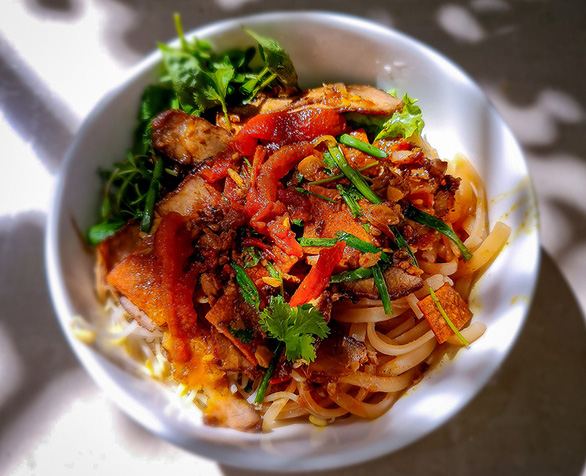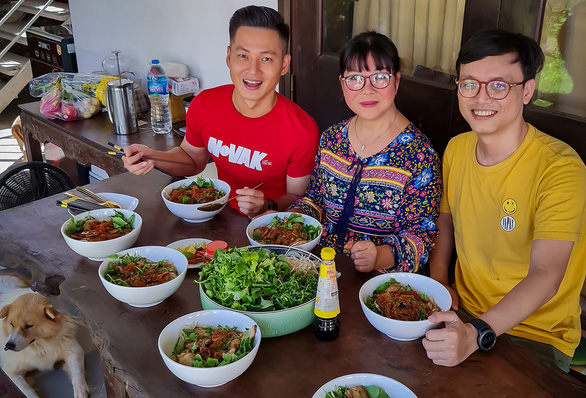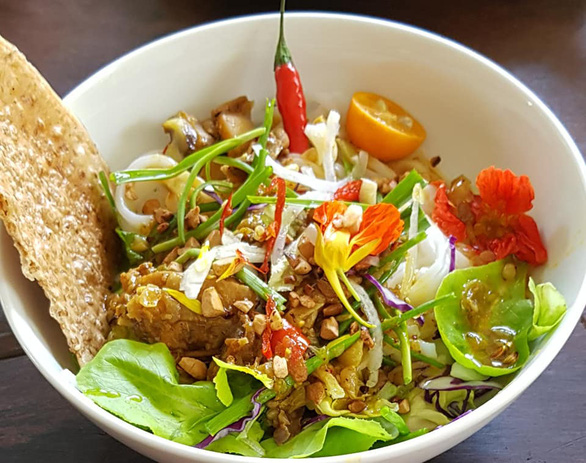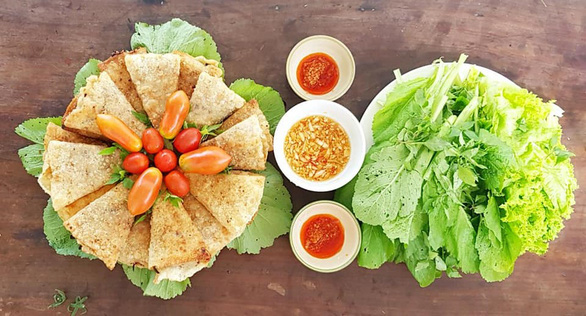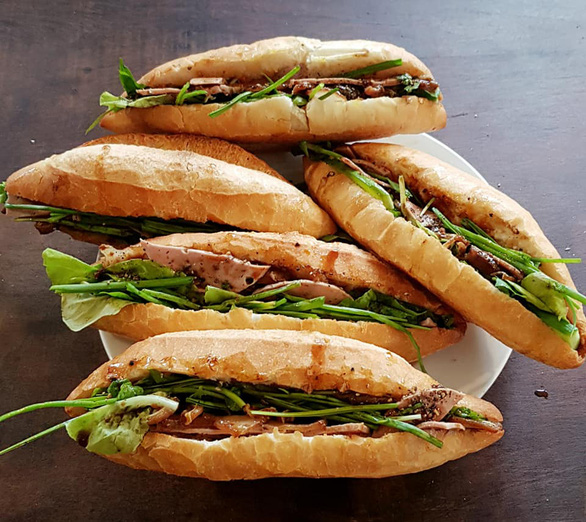Singer Anh Tuyet’s cao lau recipe is an urban legend in Vietnamese show business, with many local stars admitting to having boarded flights to visit her at her home in Hoi An just to experience her version of the storied dish.
Tran Thi Tiet, known on stage as Anh Tuyet, is an established Vietnamese singer who rose to fame in the 1970s thanks to her heartfelt performances of early Vietnamese pop songs such as those by legendary songwriters Van Cao and Trinh Cong Son.
She currently resides in her hometown of Hoi An, a tiny city in the central province of Quang Nam known for charming visitors with its ancient town, vintage architecture, booming arts, culture scene, and holistic food experience rooted in the nature-blessed supply of greens and spices.
Born and raised on such cuisine, Tuyet holds a deep love for her city’s traditional dishes -- cao lau, mi Quang and Hoi An-style banh mi.
While these dishes seem to be universally loved by those who visit central Vietnam, Tuyet’s own twists on them have earned her a serious reputation amongst her friends and peers in Vietnam’s show business circles.
|
|
| A supplied photo of Singer Anh Tuyet (middle) enjoying food she prepared for a friendly gathering at her house in Hoi An City, Quang Nam Province, Vietnam. |
A secret recipe
After years of perfecting her recipes, Tuyet’s take on Hoi An’s dishes boils down to minuscule details that are easily looked over.
Cao lau, for example, is a noodle dish with thick, square, light yellow rice noodles punctuated with rice crackers, peanuts, a sultry sauce, and char siu meat.
Meanwhile, mi Quang, though it may seem similar to cao lau at first glance, is slightly different in its use of dark yellow noodles, lighter sauce, a grassy sensation from cu nen (wild garlic), sliced banana blossom for texture, and a more diverse range of meat, including pork, chicken, and even frog meat.
What sets Tuyet’s mi Quang recipe apart is her focus on the wild garlic and peanuts, particularly her blend of ground and crushed medium-roasted peanuts which add a crunchy mouthfeel while simultaneously thickening the sauce.
On top of that, the wild garlic Tuyet uses is pan-fried carefully to achieve caramelization, as it can easily turn yellow and bitter if left in the heat for too long.
|
|
| A supplied photo displays a bowl of mi Quang prepared by singer Anh Tuyet at her house in Hoi An City, Quang Nam Province, Vietnam. |
Tuyet also has a few tricks in her bag for cao lau: she prepares fully ripened, sauteed tomatoes and then simmers them with pork shoulder cuts to make her char siu even more savory.
Unlike other char siu recipes that add sugar during meat marination, Tuyet add hers during simmering to prevent the meat from being burned and hardened from the heat-sensitive sweetener.
For her cao lau sauce, Tuyet opts for pork collar with a touch of tomato to lighten the taste.
According to Tuyet, the dish is found at its best when it is cooked in Hoi An, as the yellow dye for the noodle must be sourced from a particular species of tree native to the area.
Water from the local Ba Le Well is also a key ingredient in ensuring a well-rounded taste.
Tuyet garnishes her dish with bitter herbs, bean sprouts, and baby mustard greens.
|
|
| A supplied photo shows a plate of crab rolls (left) prepared by singer Anh Tuyet at her house in Hoi An City, Quang Nam Province, Vietnam. |
Cooking for the memories
Tuyet’s most memorable moments in Hoi An date back to her childhood when the city was free from tourists but had ample delicacies.
Each morning, food carts throughout the city would serve up pho, red bean porridge, rice porridge with pickled mustard greens, and bun bo (beef noodle soup) with pig's trotters.
|
|
| A supplied photo displays a plate of Hoi An-style char siu banh mi prepared by singer Anh Tuyet at her house in Hoi An City, Quang Nam Province, Vietnam. |
In the evenings after finishing dinner, residents would take to the streets with guitars and meet up with neighbors for singalongs.
By 9:00 pm, as late night hunger kicks in, banh mi stalls would begin to fill with hungry patrons.
After all these years, as the distinct taste of her city’s cao lau and mi Quang begins to fade, Tuyet hopes that her recipes can help keep the true flavor of Hoi An alive.
Like us on Facebook or follow us on Twitter to get the latest news about Vietnam!



